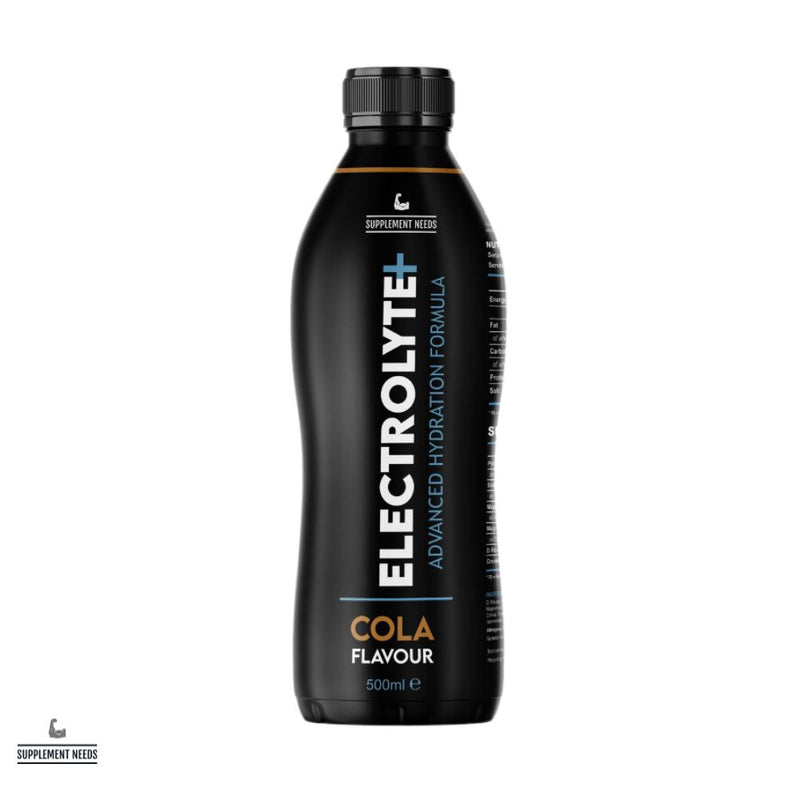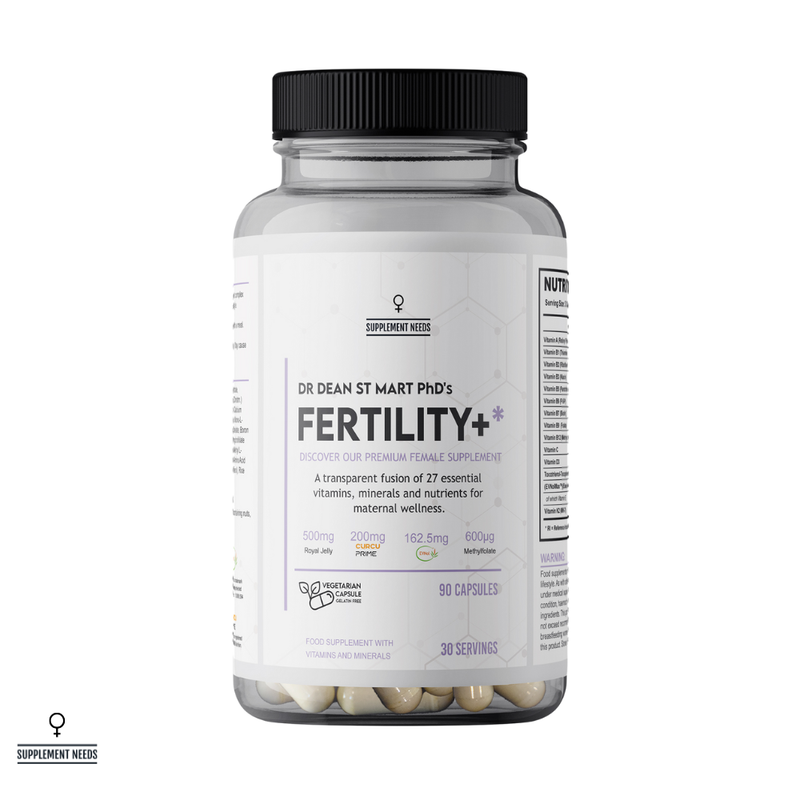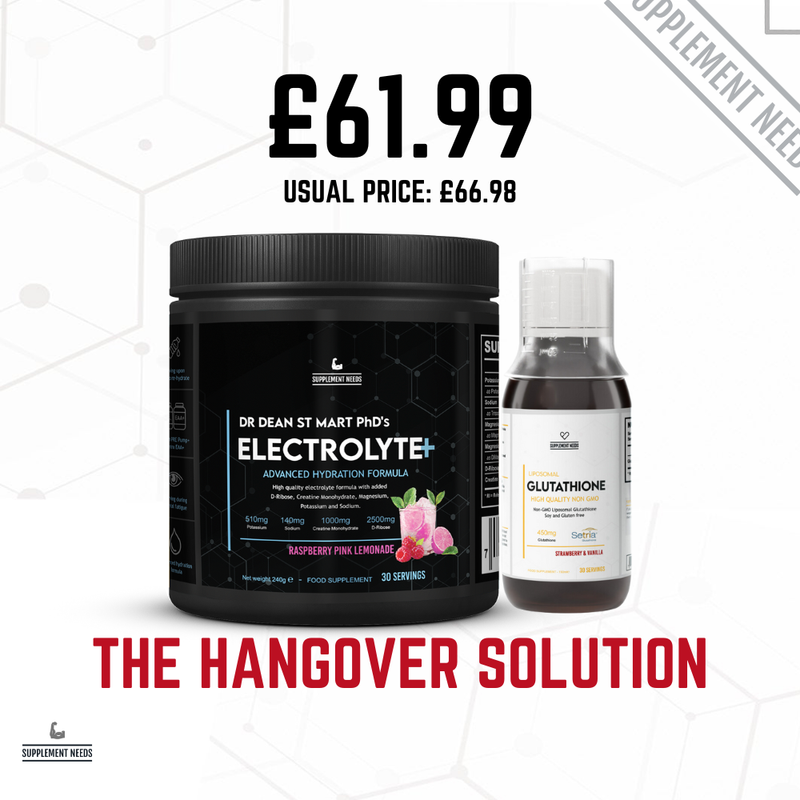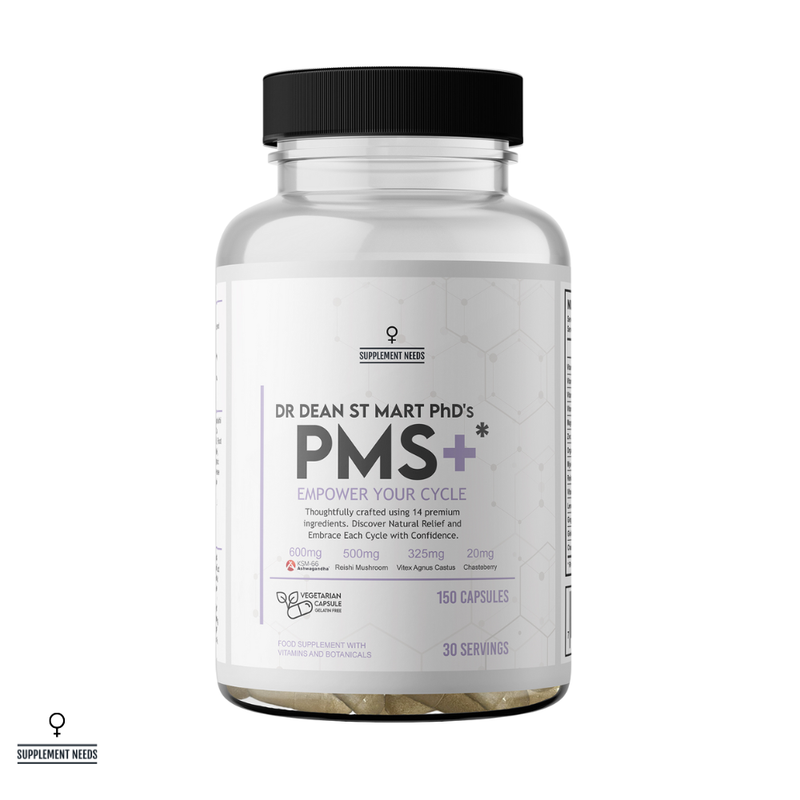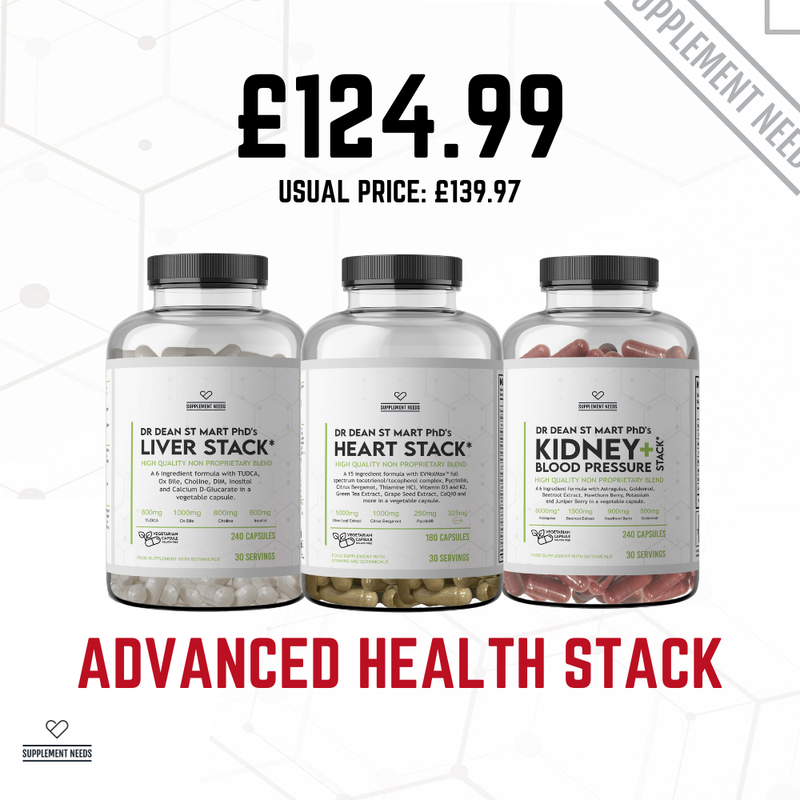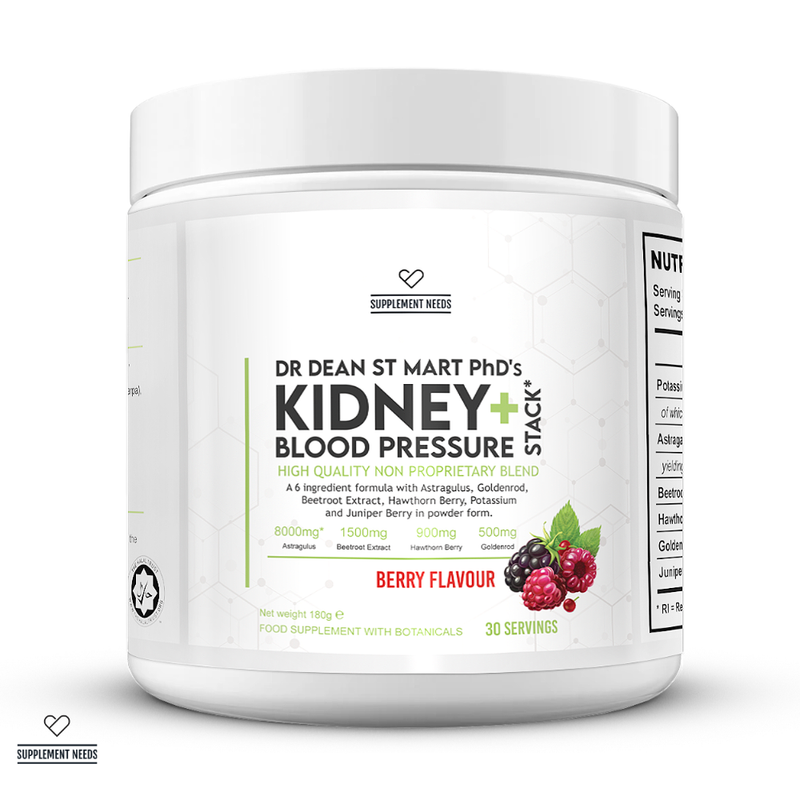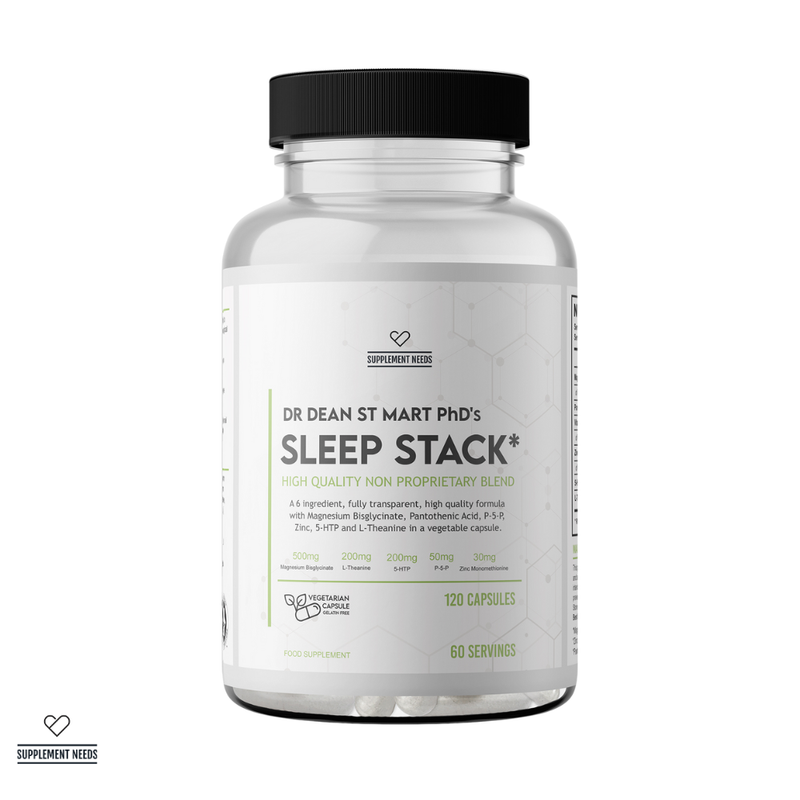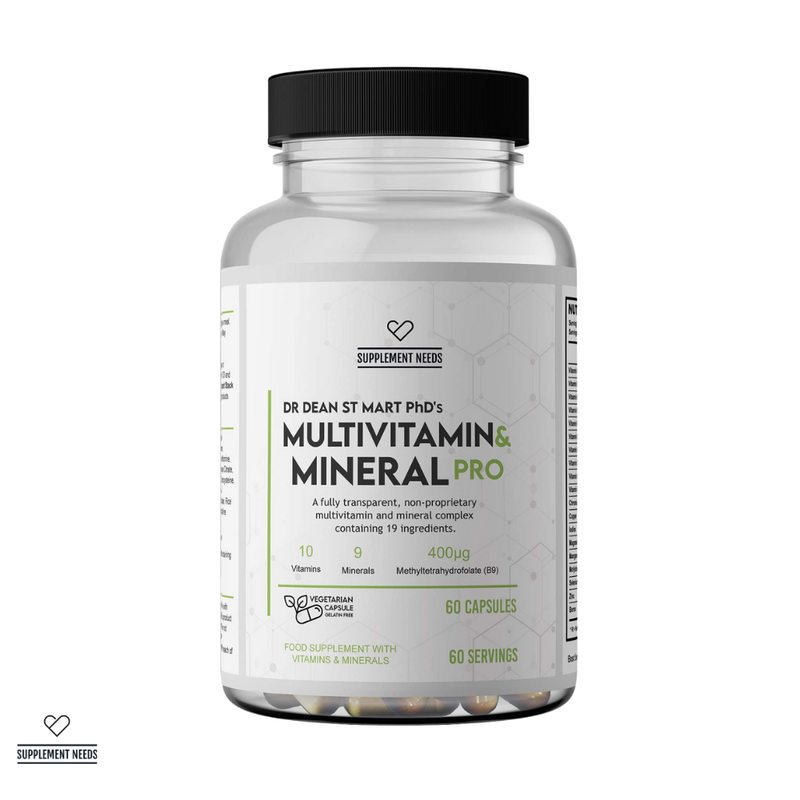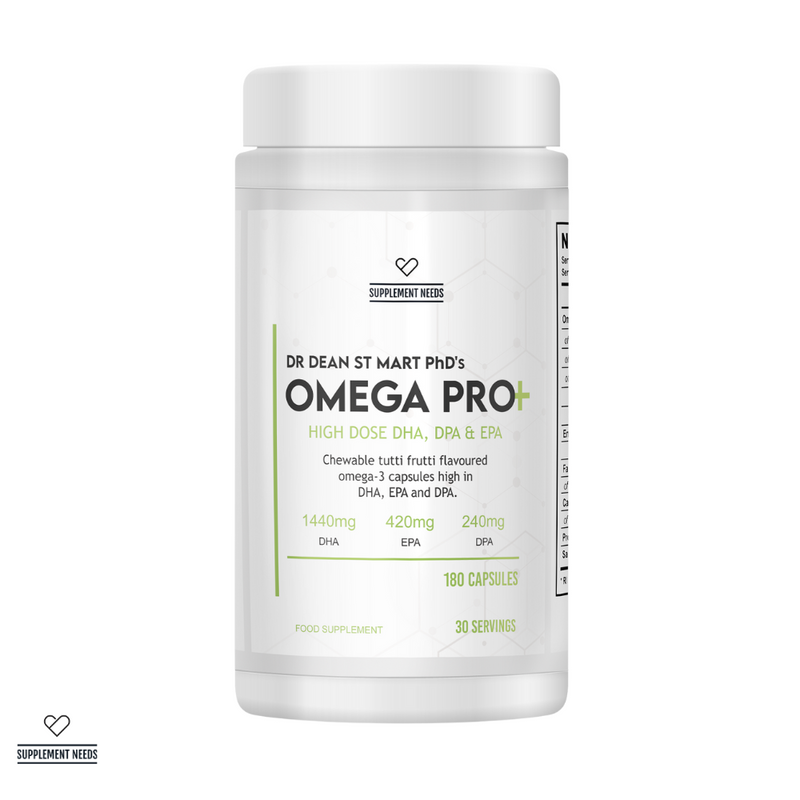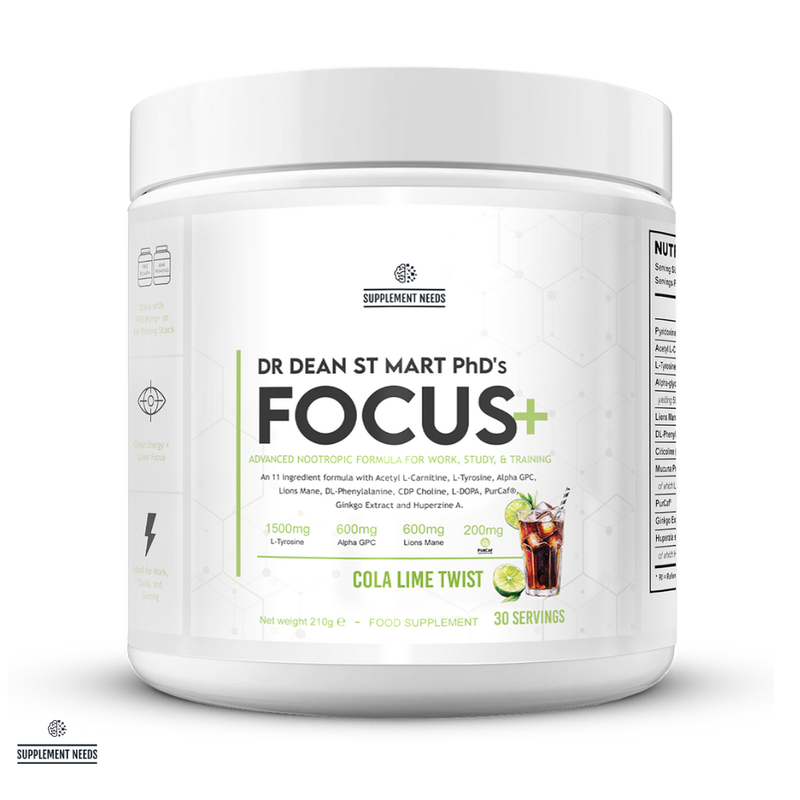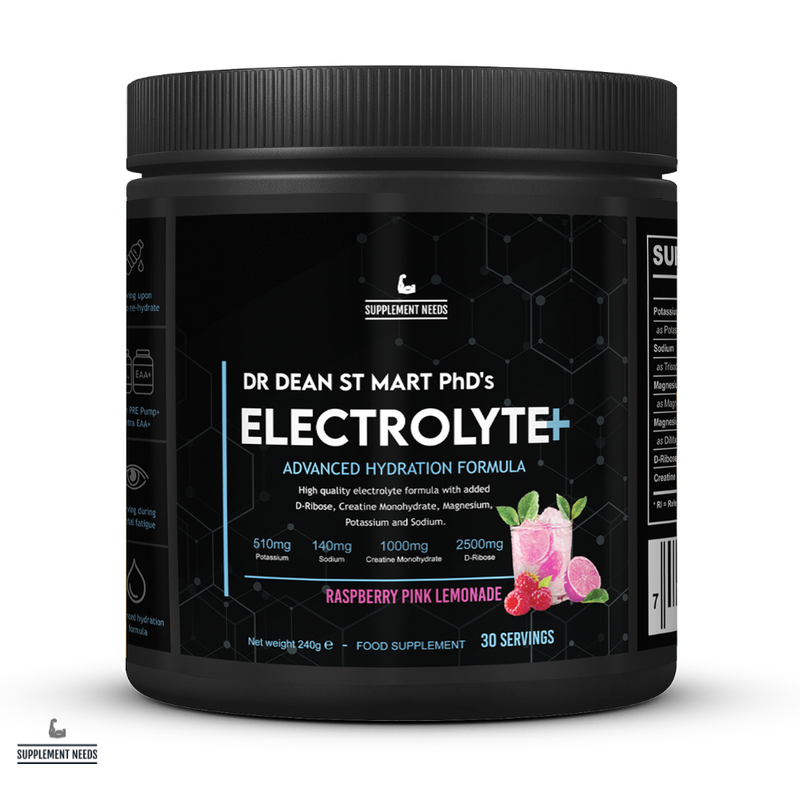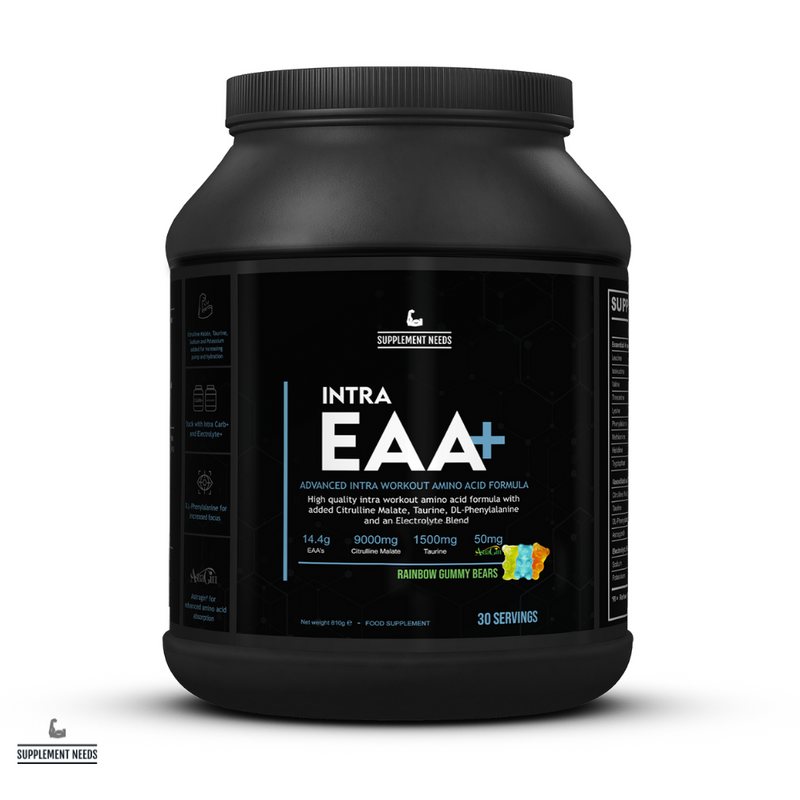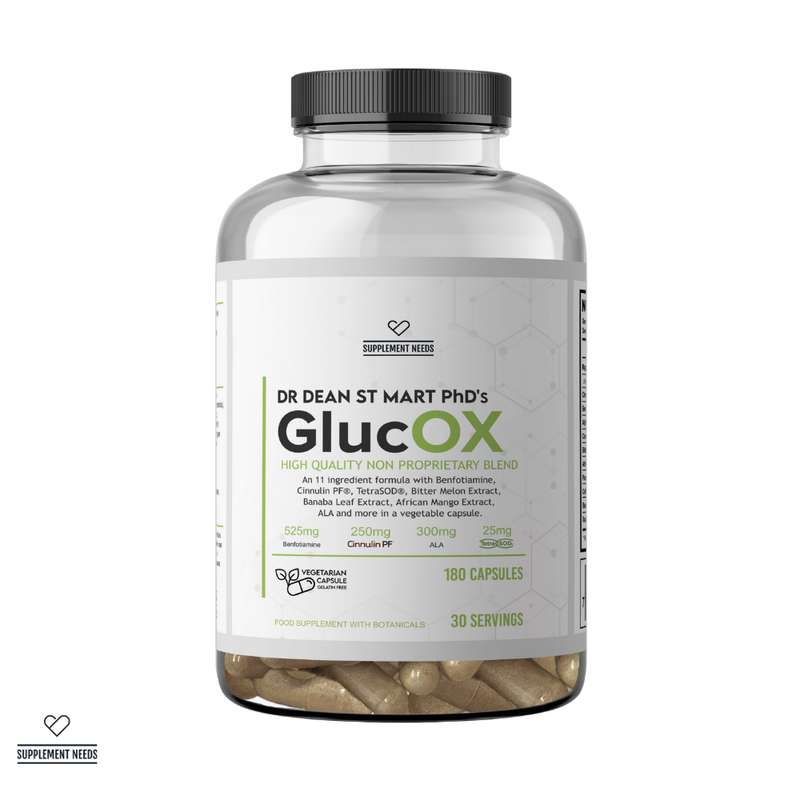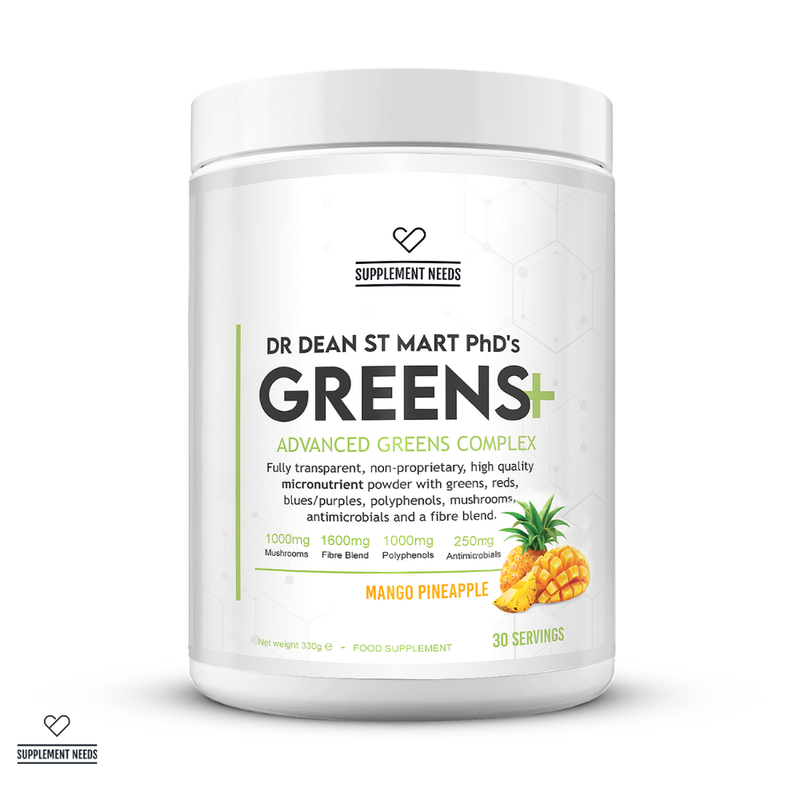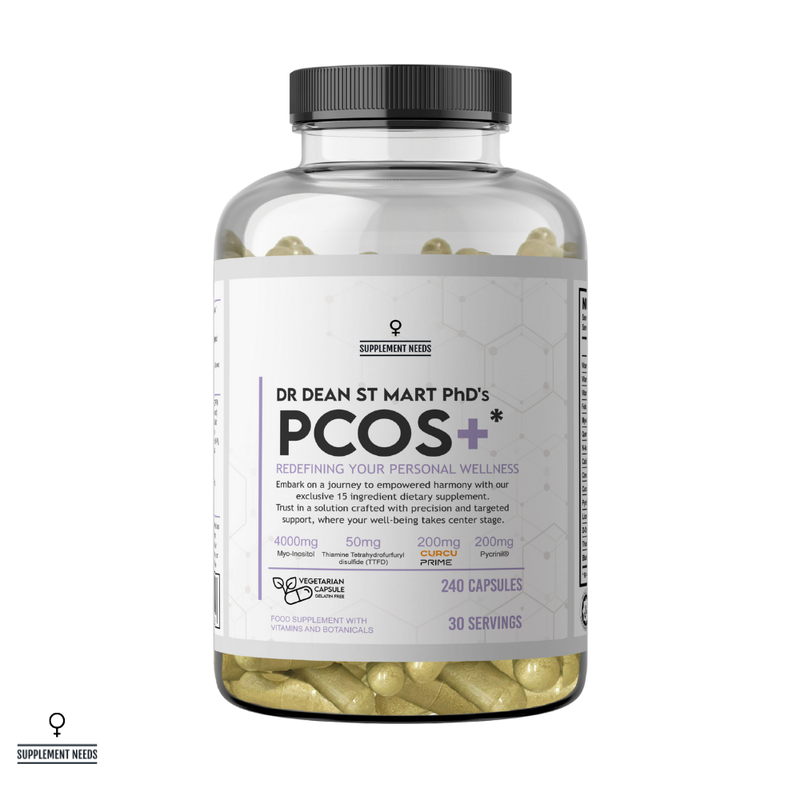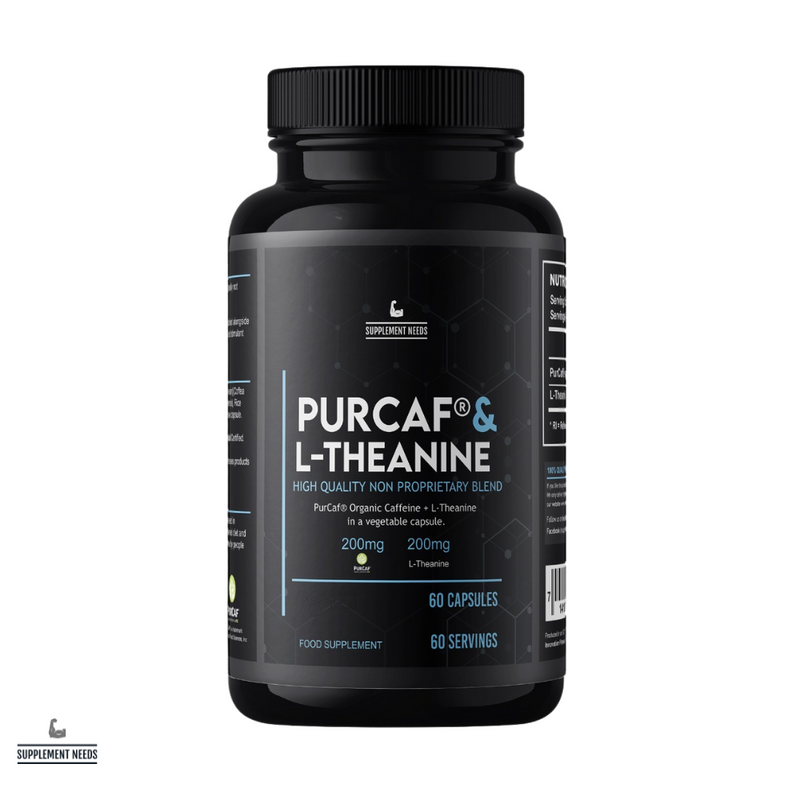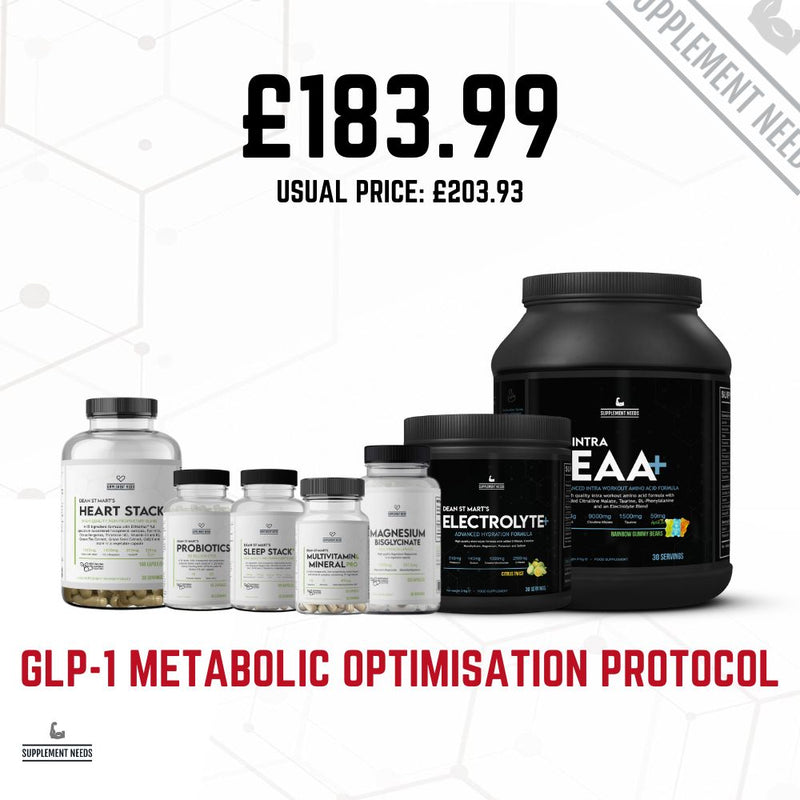One of humanity’s most endearing features is its constant strive to push its own boundaries. This evolutionary trait is in our DNA, separating our species from the Neanderthals that came before us.
Thousands of years ago, it was a desire to fashion sharp tools from the environment. Today, it is something much more exciting: biohacking.
This do-it-yourself approach to optimising one’s body, diet, and lifestyle blends modern science with an underlying exploratory impulse to reach new limits of what our bodies are able to achieve. In this article, we’ll explore the philosophies of biohacking, the potentials, and how to embark upon your own biohacking journey safely and responsibly.
What is biohacking?
Biohacking, sometimes called DIY biology, garage biology, body hacking or human enhancement, is not an official scientific discipline but rather an umbrella term for self-directed efforts to tweak biological systems.
Unlike formal research conducted in institutions, biohacking is driven by individuals and small communities, often outside regulatory oversight. Indeed, the Royal Society of Biology describes biohacking as:
‘A loose term to describe unconventional experimental biotechnology, often conducted outside traditional research environments and sometimes using everyday items or recycled equipment’1.
Essentially, biohacking means experimenting on one’s own body through diet, lifestyle adjustments, supplements, wearable tech or more extreme interventions, all with the goal of improving health, cognition or physical performance.
Perhaps one of the most extreme (and inadvisable!) examples of biohacking is in the field of brain-computer interfaces. One of the first brain-computer interfaces was developed by Irish neurologist Phillip Kennedy, who in 2014 underwent a clandestine surgery to receive a neural implant2.
This biotechnological social movement is intrinsically linked with the philosophy of transhumanism, an idea that stretches back not just decades, but centuries.
Coined by biologist, Julian Huxley in his essay “New Bottles For New Wine” in 19573, transhumanism is a philosophical and intellectual movement advocating for the continued enhancement of the human condition4.
It is believed that the word transhumanism derives from that found in Dante’s ‘Divine Comedy’ wherein the esteemed author coined the word trasumanar, meaning “to transcend human nature, to pass beyond human nature”5.
Indeed, transhumanist thinkers study the potential of evolving technologies to allow humanity to overcome our inherent limitations, and the dangers associated with it6.
Transhumanism is closely tied to the “grinder” movement, which advocates the right to self-modify through the use of chip implantation, gene manipulation or rewiring neural pathways to achieve higher states of health and even radical life extension7.
But all of that is an extreme case. Biohacking exists on a continuum. Think of transhumanism as the farthest reaches of the biohacking hemisphere.
On one end lie accessible, evidence-backed lifestyle tweaks, while on the other exists the experimental therapies that blur the line between science fiction and reality.
In this article, we’ll focus on what can be achieved here and now through processes readily available.
Why engage in biohacking?
Why would an individual such as yourself engage in biohacking? What are the motivations behind such a desire?
The answer is multifaceted and varies from person to person, however there are a few consistent strands that we have observed here at Supplement Needs:
-
Desire for personal empowerment and responsibility for one’s own health and wellbeing. In many cultural settings, physical fitness and wellbeing is considered a status symbol, with health considered the ‘new wealth’8. It is a motivation perhaps best summed up by a quote attributed to Arnold Schwarzenegger: “A well-built physique is a status symbol. It reflects you worked hard for it, no money can buy it. You cannot borrow it, you cannot inherit it, you cannot steal it. You cannot hold onto it without constant work. It shows discipline, it shows self-respect, it shows patience…”
-
The Quantified Self movement: since the rise of the Internet and connected and smart devices, an informal ‘Quantified Self’ movement has emerged which is predicated on ‘self-knowledge through numbers’9.
-
Enhancement of cognitive performance: this is a motivation behind biohacking that emerged in the 1980s from Silicon Valley. Today, it remains a major motivating factor for many biohackers, with prominent advocates including Bryan Johnson, who is perhaps best known for his longevity work and meticulously controlled regimen called Project Blueprint10.
-
Pursuit of longevity: some biohackers are explicitly engaged in the activity for the purpose of enhancing the longevity of their lives.
-
Experimentation and innovation: some people pursue biohacking simply for the sake of being amongst the ‘vanguard’ of people who are being the first to pursue enhancement. Many such people also pursue biohacking out of frustration with traditional healthcare systems and the (perceived) slow pace of biotechnology development.
Whatever your motivation for pursuing biohacking, you’ll find some insightful and useful pointers below to help you with your own biohacking journey.
The rich world of biohacking practices
The possibilities of biohacking have never been more exciting.
For those interested in improving their daily lives, the scope of what is possible means that just about any facet of modern living can be optimised.
To make it easier, we’ve broken this down into relevant sections: diet and nutrition, sleep, exercise, stress, temperature exposure, and technology.
Diet and nutrition
The advancements in our understanding of diet and nutrition make this area one of the most exciting and fruitful of all the areas of biohacking. And, it goes far beyond merely dietary controls and deep into the realms of genetic testing, and continuous monitoring of your bodily data. It’s these aspects of biohacking and diet and nutrition that we’ll explore below.
Intermittent fasting
Most diets focus on what you consume, while intermittent fasting focuses on when.
Scientists define intermittent fasting (IF) as; ‘an eating pattern that alternates between periods of fasting and eating’11.
By restricting eating to specific windows, you extend the period when your body has burned through the calories from the previous meal, encouraging metabolic flexibility and optimising energy use.
There are a number of different types of IF that use varying time dispersal patterns. Below, we’ve detailed the most common types of IF:
-
Time-restricted eating (TRE): this method centres on restricting your eating to a specific window each day. Variations of TRE include:
-
16/8 method: this involves fasting for 16 hours and then subsequently eating all your meals within an eight-hour period.
-
14/10, 18/6, 20/4 methods: these are simply variations on the 16/8 method.
-
The 5:2 diet: this method will see you eat normally for five days of the week and then severely restricting your caloric intake (typically down to 500–600 calories) on two non-consecutive days.
-
Alternate-day fasting: this is a simple method that involves switching between days of normal eating followed by days of complete fasting or very low caloric intake.
-
Eat-stop-eat: this IF method requires you to undertake one or two 24-hour fasts per week (e.g. fasting from your evening meal one day until the evening meal the next day).
Intermittent fasting is believed to work due to what some researchers call the ‘metabolic switch’. This is a process whereby your body makes a fundamental shift in the way it generates energy. Following a period of fasting, your body will switch from using glucose from carbohydrates to generate energy to burning fat instead. This occurs when the body has depleted its available glycogen stores within the liver and muscle tissue.
Once depleted, your body shifts into fatty acid oxidation, resulting in the production of ketone bodies in the liver. These ketones are then used as an energy source12.
And, this ‘metabolic switch’ can have some tangible benefits.
Research into intermittent fasting has found that it can improve weight management, insulin sensitivity, blood pressure, and markers of inflammation13, as well as brain function, reducing oxidative stress linked to neurodegeneration.
But the benefits of intermittent fasting extend beyond weight control. Triggering a metabolic shift where insulin levels drop encourages the breakdown of fat, and increases the human growth hormone, which aids muscle preservation and regeneration14.
Fasting has also been linked to autophagy, a cellular “clean-up” process that removes damaged cells, potentially assisting in disease prevention15.
Aligning meals with our circadian rhythms can improve digestion, metabolism, and hormone regulation.16

If you’re looking for a supplement to potentially assist you with your blood glucose management and to act as a glucose disposal agent, consider investing in Supplement Needs GlucOX, a non-proprietary formulation of 11 ingredients (including TetraSOD, Cinnulin PF and more).
Nutrigenomics
Nutrigenomics is the science that explores the relationship between nutrition, genetics, and health, uncovering how dietary choices influence gene expression and, in turn, how genes shape our response to food.
Scientific bodies have defined nutrigenomics as:
‘The study of how food affects a person’s genes and how a person’s genes affect the way the body responds to food. Nutrigenomics is used to learn more about how genes and diet together may affect a person’s health and risk of developing diseases, such as cancer. It may also help find new ways to prevent and treat disease’17.
Unlike conventional nutrition, which applies broad dietary principles to populations, nutrigenomics crafts personalised diets, enabling individual gene expression to improve metabolism, reduce inflammation, and mitigate disease risk18.
Our genetic blueprint determines how efficiently we metabolise nutrients, absorb vitamins, and process different food groups.
Variations in genes like MTHFR affect how the body converts folate into its active form, impacting cardiovascular health and neurological function, whereas LCT gene mutations dictate lactose tolerance, explaining why some people digest dairy effortlessly while others experience discomfort19.
Through genetic testing, nutrigenomics identifies single nucleotide polymorphisms (SNPs), small genetic variations that influence nutrient metabolism. Once these genetic markers are analysed, dietary adjustments can be made20. These dietary adjustments may target:
-
Inflammation control: certain foods can upregulate or suppress inflammatory gene expression. (For example, Omega-3 fatty acids help regulate cytokine activity to reduce inflammation)21.
-
Metabolism: variants in genes like PPARG influence fat metabolism, helping guide decisions on macronutrient distribution22.
-
Detoxification pathways: gene variations impact how efficiently the liver processes toxins, affecting nutrient needs for detox support23.
By tailoring nutrition to genetic predispositions, nutrigenomics allows individuals to tailor nutrient intake based on their unique metabolic pathways rather than relying on generic dietary guidelines.
This precision nutrition has the potential to reduce disease susceptibility, manage conditions like diabetes more effectively, and even improve athletic performance24.

Should you undertake nutrigenomic analysis and find that Omega-3 fatty acids may help reduce inflammation in your personal physiology, then consider adding a high-quality Omega-3 supplement to your diet - such as Supplement Needs Omega-3 High Strength which contains high levels of DHA, DPA, and EPA.
Supplementation
Modern diets, environmental stressors, and genetic predispositions can lead to deficiencies that impact long-term health. Even with a well-rounded diet, factors such as soil depletion, food processing, and individual metabolic variations mean that many people don’t get enough of the essential nutrients required for optimal function25. Indeed, studies have found ‘a high prevalence of micronutrient shortfalls in the UK population’26.
That is why supplementation is so important. It ensures the body receives the raw materials it needs to stay healthy, and fend off complications that arise from malnutrition.
It’s why so many of the world’s leading biohackers - such as Bryan Johnson - have such an intense focus upon supplementation. In Johnson’s case, he is rumoured to take as many as 100 individual supplements each and every day…
Supplementation can provide aid to almost every aspect of the human body, so let’s focus on three of the most important parts: the heart, the liver, and the kidneys.
Heart
The heart relies on a steady supply of omega-3 fatty acids, antioxidants, and key vitamins to maintain function and reduce inflammation:
-
EPA & DHA (Omega-3s): are essential fatty acids that help regulate blood pressure, reduce arterial plaque buildup, and support overall cardiovascular health27.
-
Coenzyme Q10 (CoQ10): is a vital compound for energy production in heart cells. CoQ10 supports mitochondrial function and has been linked to improved heart health.
-
Citrus Bergamot: is used in heart-supporting supplement stacks, and has been studied for its ability to lower LDL cholesterol and improve lipid profiles28.

If you want to ensure you’re supplementing your diet with the nutrients that will best support cardiovascular health, then consider adding Supplement Needs Heart Stack to your regimen. Developed by renowned expert Dr Dean St Mart PhD, Heart Stack is one of our most popular supplements and combines 15 ingredients including EvNolMax full spectrum tocotrienol/tocopherol Vitamin E complex.
Liver
The liver is responsible for filtering toxins, metabolising nutrients, and regulating hormones. Certain supplements enhance its ability to detoxify and maintain balance. These include:
-
Choline is an essential component for liver function, supporting fat metabolism and prevents fatty liver disease29.
-
Milk Thistle is a powerful antioxidant, shown to protect liver cells from damage and support detoxification30.
-
Astaxanthin is a potent carotenoid with liver-protective properties that helps combat oxidative stress and inflammation31.

When it comes to supporting your liver health, you may find it potentially beneficial to add a dedicated supplement to your diet that has been designed to provide those micronutrients that specifically support the liver. One example is Supplement Needs Liver Stack, which has been formulated to include TUDCA (tauroursodeoxycholic acid), Ox Bile Powder Extract, L-Choline Bitartrate, Calcium D-Glucarate, and Diindoylmethane (DIM).
Guide: if you want to find out more about TUDCA in particular, and it’s potential benefits for your hepatic health, then read our guide What Is TUDCA & What Does It Do?
Kidney
The kidneys filter waste, regulate fluid balance, and maintain electrolyte levels. All these functions directly impact blood pressure, highlighting just how important the kidneys are to regular human life. Nutrients that can support kidney function include:
-
Potassium is crucial for maintaining normal blood pressure, helping balance sodium levels and supports kidney function32.
-
Juniper berry extract is found in kidney-supporting supplements, aiding excretory function and supports urinary tract health33.
-
Green tea extract is rich in polyphenols, and has been studied for its ability to improve kidney function and reduce oxidative stress.34

If you’re looking for a dedicated supplement to provide those nutrients that support healthy kidney function, then invest in Supplement Needs Kidney and Blood Pressure Stack. In particular, this supplement has been formulated to include Juniper Berry - which supports the excretory function of the kidneys, and Potassium - which contributes to the maintenance of normal blood pressure.

If, instead, you’d like to combine your liver, kidney and heart support into a single purchase, then look no further than the Supplement Needs Advanced Health Stack. This stack includes 27 ingredients at efficacious doses, ensuring targeted support for vital organ function.
Sleep
Sleep is one of the most important elements of our daily routine. It provides the necessary window to restoring our energy levels and physically repairing our bodies. But a lack of it can have serious consequences for our bodies35.
The circadian rhythm
The importance of a regular sleep routine really cannot be overstated. To get it right, you need to listen to your circadian rhythm.
But what is the circadian rhythm? It is a finely tuned, 24-hour metronome that orchestrates virtually every function in your body.
Nestled in the hypothalamus is the suprachiasmatic nucleus (SCN), a miniscule cluster of around 20,000 neurons. With remarkable precision, the SCN paces hormone release, fluctuates body temperature, modulates metabolism and even primes your immune system, all to mirror the rhythms of day and night36.
During your “biological day,” light hitting your retina sends signals to the SCN that trigger wake-promoting hormones and raise core temperature, sharpening focus and energy. Then, as dusk falls, the SCN flips the switch. Melatonin production surges, body temperature falls, and the body shifts into repair mode.
The thing is, this internal clock isn’t exactly 24 hours. It runs slightly long, often around 24.2 hours, so without that daily blast of morning light, it would slowly drift out of sync37.
To keep that clock aligned, three factors matter most:
-
The regular timing of your activities (especially when you expose yourself to light).
-
The intensity of environmental cues.
-
Your individual genetic makeup.
By understanding and respecting these signals (waking with sunlight, dimming screens by dusk, and keeping a consistent routine) you can harness your body’s innate timing system to feel alert by day and truly rested by night.
As you’ve probably already guessed, sleep hygiene is always high up a biohacker’s agenda. Why? Because, of the innate benefits that it delivers. These include:
-
Cellular repair, brain detoxification, and regeneration: (see the next section below for a more detailed exploration of this).
-
Immune system enhancement: good sleep reinforces your immune system. As studies have indicated, even a single night of poor sleep can reduce the activity of the natural killer (NK) cells within your body that are essential for fighting off infections38.
-
Emotional regulation: the link between a poor night of sleep and a bad mood is intuitive to most of us. But, it’s backed up by science, with studies showing that REM sleep can support emotional processing and regulation39.
-
Longevity and life span: consistent, good-quality sleep has been shown in studies to be linked to reduced risk of chronic diseases such as heart disease, type 2 diabetes, and autoimmune conditions40.
As you can see, every biohacker should be prioritising sleep hygiene as part of their regime. In the next section, we’ll have a deeper look at the glymphatic system - and the role it plays in ‘detoxing’ your brain.
The glymphatic system
Deep, slow-wave sleep is when your brain runs its nightly detox. This phase, which accounts for roughly 15–20% of total sleep in adults, is when the glymphatic network opens its channels.
A relatively new discovery in the scientific world, the glymphatic system is a network of perivascular channels sculpted by astrocyte “endfeet” that clears metabolic by-products from the brain41.
Active almost exclusively during slow-wave sleep, this system flushes out soluble proteins and neurotoxins (including β-amyloid and tau) via cerebrospinal fluid, ferrying them into lymphatic vessels for disposal.
The glymphatic pathways also distribute essential nutrients (glucose, lipids, amino acids and key neurotransmitters) throughout neural tissue, supporting volume transmission and overall brain metabolism.
Without this nightly sweep, waste can accumulate, predisposing us to neurodegenerative conditions such as Alzheimer’s disease, and undermining recovery after traumatic brain injury or stroke42.
To boost your share of this critical stage, prioritise daytime exercise, particularly aerobic activities, and finish eating at least three hours before bed to avoid metabolic disruptions.

Some biohackers also supplement with Magnesium Bisglycinate, which can deepen slow-wave sleep by calming neural activity43. At Supplement Needs, our Magnesium Bisglycinate capsules are designed to aid in ensuring daily health and mineral balance is optimised.

If you want a more comprehensive sleep-focused supplement, then you’ll be interested in our Supplement Needs Sleep Stack, which has been formulated to include sleep-supporting nutrients like Magnesium, Zinc, 5-HTP, and Vitamin B5.
Exercise
Exercise is one of the most fruitful and exciting areas of biohacking. Various forms of exercise can have a remarkable effect upon your overall physical wellbeing and longevity. Exercise contributes to a variety of phenomena and process such as mitochondrial biogenesis44, cellular repair and regeneration45, hormonal regulation46, and inflammation reduction47.
However, there’s one particular way in which exercise can contribute to your biohacking efforts - via the principle of hormesis, which we’ve explored in more detail below.
Hormesis
Exercise is at the heart of biohacking because it harnesses the principle of hormesis, the phenomenon in which low-to-moderate doses of stressors can actually have a beneficial effect on an organism.
For instance, weightlifting applies mechanical tension to muscle fibres, inducing micro-tears that activate satellite cells and stimulate hypertrophy via the mTOR signalling pathway48. At the same time, resistance training increases bone mineral density, improving skeletal resilience and reducing osteoporosis risk.
Even modest loads act as a hormetic dose, elevating reactive oxygen species (ROS) transiently, which in turn upregulates endogenous antioxidant enzymes (superoxide dismutase and catalase) through the Nrf2 pathway.
This cyclical stress-repair dynamic strengthens tissues, and conditions cells to cope with future issues.
Studies show that adults engaging in twice-weekly resistance sessions can boost muscle strength by up to 20% over three months49.
A similar benefit can be seen from short, intense sprints.
During a 30-second all-out sprint, the diaphragm and intercostal muscles work at maximal capacity to meet explosive oxygen demands. This trains them to contract more efficiently, improving ventilatory threshold and VO₂ max.
On a cellular level, sprint intervals provoke spikes in AMP-activated protein kinase (AMPK) and peroxisome proliferator-activated receptor gamma coactivator-1 alpha (PGC-1α), key regulators of mitochondrial biogenesis.
The result is an increase in both mitochondrial density and function, improving aerobic capacity and metabolic flexibility50.
Protocols such as four to six 30-second sprints with two-minute recovery periods have demonstrated a 13% rise in maximal aerobic power and significant improvements in insulin sensitivity within weeks.
By embracing brief, high-intensity efforts, biohackers exploit hormesis to drive rapid, wide-ranging enhancements in cardiorespiratory fitness and cellular resilience.

If you’re going to be hitting the gym regularly as part of your biohacking efforts, then ensure you’re kitted out with the very best gym clothing and equipment. The Supplement Needs SN CLO. range is a collection of athletic and fitness wear that is trusted by the very best.
Stress management
When stress takes hold, your body floods with catecholamines (adrenaline and noradrenaline) triggering the “fight-or-flight” cascade that prioritises immediate survival over long-term regulation51.
As heart rate and blood pressure surge, glucose is shunted into the bloodstream, and energy metabolism shifts from efficient aerobic ATP production to rapid glycolysis.
While adaptive in short bursts, chronic activation of this system depletes key nutrients, notably vitamins B5 (pantothenic acid) and B6 (pyridoxine), both of which are essential cofactors in catecholamine breakdown52.
Deficiencies in these B-vitamins can prolong elevated neurotransmitter levels, exacerbating anxiety and perpetuating a cycle of stress and fatigue. Here, supplements can provide the necessary vitamins in carefully considered doses.

At Supplement Needs, our Vitamin B Complex supports the enzymatic pathways that convert adrenaline into inactive metabolites, helping to restore equilibrium and safeguard energy metabolism over the long term.
But, other than supplementation, what else can you do to manage your stress levels? The answer could potentially lie for you in meditation and breath work.
Meditation
Daily mindfulness and meditation practice offers more than a momentary escape, it rewires stress circuitry in the brain53.
Research on Mindfulness-Based Stress Reduction (MBSR) programmes shows regular practice lowers cortisol levels, improves prefrontal cortex function and boosts heart-rate variability.
Just ten minutes of daily focused attention on the breath can interrupt the stress response, reducing activity in the amygdala (the brain’s alarm centre) and improving connectivity with the dorsolateral prefrontal cortex, which governs emotional regulation.
Over weeks, practitioners report greater mental clarity, improved decision-making under pressure and a heightened ability to bounce back from challenges54.
To begin, try a simple body-scan meditation. Lie or sit comfortably, focus attention systematically on each part of the body, and observe sensations without judgment.
Consistent habit formation, ideally at the same time each day, cements these neurobiological gains and builds robust stress resilience. If you do also want to give yourself a boost, it may be beneficial to add AM Priming Stack to your daily supplementation regimen.
Breath work
Breath work harnesses autonomic control to rapidly shift physiological state.
Take the famous Wim Hof Method. This involves 30 rapid, deep diaphragmatic breaths followed by a full exhalation and breath-hold, stimulating short-term respiratory alkalosis and elevating blood oxygen saturation.
This sequence triggers a catecholamine release that heightens alertness and dampens pro-inflammatory cytokines, as demonstrated in controlled trials55.
Subjects practising the method exhibit increased epinephrine levels alongside reduced markers of inflammation when exposed to endotoxin56.
However, it should be approached cautiously. Beginners may experience light-headedness or tingling sensations, so it’s advised to practice seated or supine and to progress gradually.
Temperature exposure
Temperature exposure is another tool that should be in every biohacker’s arsenal. Why? Because it harnesses controlled extremes of heat and cold as a form of hormesis, triggering adaptive responses that improve circulation, metabolism and cellular resilience.
Cold therapy
Immersing the body in cold water, whether via ice baths or 10 °C showers lasting three to six minutes, triggers a cascade of physiological responses.
The rapid drop in skin temperature causes peripheral vasoconstriction, redirecting blood to the core and supporting central organ perfusion.
At a cellular level, acute cold exposure stimulates the release of cold-shock proteins, including members of the LIN28 family, which have been linked to enhanced insulin sensitivity, reduced oxidative damage and improved protein synthesis. Brown adipose tissue (BAT) is activated, increasing non-shivering thermogenesis and raising metabolic rate even after leaving the water57.
If you partake in cryotherapy, you can induce what is known as the Lewis Hunting Reaction - a process where your body cycles through both vasoconstriction and vasodilation.

Should you wish to explore cryotherapy and include it as part of your biohacking efforts, then did you know you can undertake it at the SN Hub? Our CryoSpa is the same as those used by Premier League football teams and uses water that is infused with Magnesium Sulphate and Sodium Chloride. Find out more about the Recovery Suite at the SN Hub.
Heat therapy
Regular sauna bathing offers more than relaxation, it is a potent hormetic stressor.
Heat exposure elevates heart rate and cardiac output, mimicking moderate exercise while inducing peripheral vasodilation. Repeated sessions upregulate heat-shock proteins (HSP70, HSP27), which act as molecular chaperones to repair damaged proteins and protect cells against various insults58.
Studies from Finland link frequent sauna use to lower all-cause mortality, reduced cardiovascular events and improved endothelial function, likely due to enhanced nitric oxide bioavailability59.
As we’ve previously explored, infrared saunas in particular can have beneficial effects. Infrared saunas have studied for their potential to:
-
Assist with muscle recovery post-exercise60.
-
Reduce inflammation - in both acute and chronic scenarios61.
-
Improve skin health and complexion62.
-
Improve cardiovascular health63.
-
Improve metabolic health64.

If you want to partake in infrared sauna therapy, then you can do so at the SN Hub. We have a variety of membership options available, including short-term and long-term options.
Technology
Last, but by no means least, we have the exciting world of technology. Advancements in tech over the past decade have opened the door to myriad biohacking opportunities.
Wearable devices, in particular, have transformed once‐occasional measurements into continuous feedback loops.
Smartwatches, like the Apple Watch and Garmin Fenix offer real‐time heart rate, heart‐rate variability (HRV), sleep staging and even single‐lead ECG readings. By tracking fluctuations in HRV, biohackers gauge stress responses and recovery readiness.
Fitness trackers from Fitbit or Polar deliver step counts, calories burned and sleep efficiency scores, making them ideal for foundational lifestyle interventions.
For those seeking deeper metabolic insight, continuous glucose monitors (CGMs) such as Dexcom G6 or Abbott Libre 2 provide minute‐by‐minute tracking of blood sugar, a literal lfiesaver for people with diabetes.
CGMs reveal how meals, exercise and stress influence glycaemic control, allowing individuals to fine‐tune macronutrient ratios or meal timing to stabilise energy and mitigate insulin spikes.
More recently, finger‐mounted rings like Oura have allowed people to measure peripheral skin temperature, HRV and movement to generate readiness and sleep‐quality scores.
How to get started with biohacking
It’s clear that the world of biohacking is a place of near limitless potential, but before you dive in, it’s important to understand the impact and risks associated.
Before starting any biohacking regime, speak with a medical professional. They will be able to provide you with greater context and insight into your body, and what you can benefit from.
Being part of a community can help. Seek out similarly-minded biohackers to get access to tips, tricks, and first-hand accounts of what to expect.
Know your limitations. What works for one person may not work for you. Don’t push yourself if you do not feel comfortable, and always know when to stop.
Last but not least, stay safe. If you start a regime and notice side effects, you should stop immediately and seek medical help.
Enhance your health with Supplement Needs
Biohacking has never been more exciting or accessible. With the realms of potential near limitless, there is seldom a part of our lives that cannot be optimised.
When looking for supplements, look no further than Supplement Needs. We have an unmatched selection of supplements carefully designed and formulated by Dr Dean St Mart PhD to provide the vitamins and minerals at efficacious doses to live a healthy life.
Shop premium supplements today
For more insights and information about supplements, read the Supplement Needs blog…
Everything You Need to Know About Curcumin | Why You Should Avoid Cheap Omega 3 Supplements | Maintaining Kidney Health: What You Need to Know
Disclaimer
The information contained on this website should not be used as a substitute for professional medical care or advice. If you have questions about your health, please contact your doctor.
References
1. The Biologist. Focus On: Biohacking [online]. Available at: https://www.rsb.org.uk/biologist-features/focus-on-biohacking (Accessed on 18th June 2025).
2. Wired. The Neurologist Who Hacked His Brain - And Almost Lost His Mind [online]. Available at: https://www.wired.com/2016/01/phil-kennedy-mind-control-computer/ (Accessed on 18th June 2025).
3. Huxley, Julian (1957). "Transhumanism". New Bottles for New Wine. London: Chatto & Windus. pp. 13–17. Retrieved March 1, 2023.
4. Mercer, Calvin; Throten, Tracy J., eds. (2015). Religion and Transhumanism: The Unknown Future of Human Enhancement. Praeger. ISBN 978-1-4408-3325-0.
5. Peter Harrison, Joseph Wolyniak, The History of ‘Transhumanism’, Notes and Queries, Volume 62, Issue 3, September 2015, Pages 465–467, https://doi.org/10.1093/notesj/gjv080
6. Fuller, S. We May Look Crazy to Them, But They Look Like Zombies to Us: Transhumanism as a Political Challenge. 8 Sep 2015. https://web.archive.org/web/20161106181953/http://ieet.org/index.php/IEET/more/fuller20150909 (Accessed 11th June 2025)
7. HandWiki. Grinder (Biohacking). Encyclopedia. https://encyclopedia.pub/entry/35483 (Accessed on 11 June 2025).
8. Bupa Private Client. Has Good Health Become the Ultimate Status Symbol? [online]. Available at: https://www.bupaprivateclient.com/en/blogs/has-good-health-become-the-ultimate-status-symbol (Accessed on 19th June 2025).
9. Fox B, Felkey B. The Quantified Self [online]. Available at: https://pmc.ncbi.nlm.nih.gov/articles/PMC11089609/ (Accessed on 19th June 2025).
10. Wikipedia. Bryan Johnson [online]. Available at: https://en.wikipedia.org/wiki/Bryan_Johnson (Accessed on 19th June 2025).
11. Shalabi H, Hassan A, Al-Zahrani F, et. al. Intermittent Fasting: Benefits, Side Effects, Quality of Life, and Knowledge of the Saudi Population [online]. Available at: https://pubmed.ncbi.nlm.nih.gov/36909028/ (Accessed on 19th June 2025).
12. Anton S, Moehl K, Donahoo W, et. al. Flipping the Metabolic Switch: Understanding and Applying Health Benefits of Fasting [online]. Available at: https://pmc.ncbi.nlm.nih.gov/articles/PMC5783752/ (Accessed on 19th June 2025).
13. Joseph R, MD. Should you try intermittent fasting for weight loss?. Harvard Health Publishing. https://www.health.harvard.edu/blog/should-you-try-intermittent-fasting-for-weight-loss-202207282790 (Accessed on 11 June 2025).
14. Vijayakumar A, Yakar S, Leroith D. The intricate role of growth hormone in metabolism. Front Endocrinol (Lausanne). 2011 Sep 27 https://pmc.ncbi.nlm.nih.gov/articles/PMC3356038/ (Accessed on 11 June 2025).
15. Alirezaei M, Kemball CC, Flynn CT, Wood MR, Whitton JL, Kiosses WB. Short-term fasting induces profound neuronal autophagy. Autophagy. 2010 Aug https://pmc.ncbi.nlm.nih.gov/articles/PMC3106288/ (Accessed on 11 June 2025).
16. BaHammam AS, Pirzada A. Timing Matters: The Interplay between Early Mealtime, Circadian Rhythms, Gene Expression, Circadian Hormones, and Metabolism-A Narrative Review. Clocks Sleep. 2023 Sep 6 https://pmc.ncbi.nlm.nih.gov/articles/PMC10528427/ (Accessed on 11 June 2025).
17. National Cancer Institute. Nutrigenomics [online]. Available at: https://www.cancer.gov/publications/dictionaries/cancer-terms/def/nutrigenomics (Accessed on 19th June 2025).
18. Information (US), National Center for Biotechnology (1998). Nutritional and Metabolic Diseases. National Center for Biotechnology Information (US). https://www.ncbi.nlm.nih.gov/books/NBK22259/ (Accessed on 11 June 2025).
19. Wang Q, Chaerkady R, Wu J, Hwang HJ, Papadopoulos N, Kopelovich L, Maitra A, Matthaei H, Eshleman JR, Hruban RH, Kinzler KW, Pandey A, Vogelstein B. Mutant proteins as cancer-specific biomarkers. Proc Natl Acad Sci U S A. 2011 Feb 8. https://pmc.ncbi.nlm.nih.gov/articles/PMC3038743/ (Accessed on 11 June 2025).
20. MedlinePlus What are single nucleotide polymorphisms (SNPs)? https://medlineplus.gov/genetics/understanding/genomicresearch/snp/ (Accessed on 11 June 2025).
21. Lazaridis I, Patterson N, Mittnik A, Renaud G, Mallick S, Kirsanow K, Sudmant PH, Schraiber JG. Ancient human genomes suggest three ancestral populations for present-day Europeans. Nature. 2014 Sep 18 https://pmc.ncbi.nlm.nih.gov/articles/PMC4170574/ (Accessed on 11 June 2025).
22. Rosenfeld MR, Dalmau J. Anti-NMDA-Receptor Encephalitis and Other Synaptic Autoimmune Disorders. Curr Treat Options Neurol. 2011 Jun;13 https://pmc.ncbi.nlm.nih.gov/articles/PMC3705219/ (Accessed on 11 June 2025).
23. Christensen R, Langberg H. Statistical principles for prospective study protocols:: design, analysis, and reporting. Int J Sports Phys Ther. 2012 Oct https://pmc.ncbi.nlm.nih.gov/articles/PMC3474307/ (Accessed on 11 June 2025).
24. Information (US), National Center for Biotechnology (1998). Nutritional and Metabolic Diseases. National Center for Biotechnology Information (US). https://www.ncbi.nlm.nih.gov/books/NBK22259/ (Accessed on 11 June 2025).
25. Office for Health Improvement & Disparities. National Diet and Nutrition Survey 2019 to 2023: Report [online]. Available at: https://www.gov.uk/government/statistics/national-diet-and-nutrition-survey-2019-to-2023/national-diet-and-nutrition-survey-2019-to-2023-report (Accessed on 19th June 2025).
26. Bird J, Barron R, Pigat S, et. al. Contribution of base diet, voluntary fortified foods and supplements to micronutrients intakes in the UK [online]. Available at: https://pmc.ncbi.nlm.nih.gov/articles/PMC9241063/ (Accessed on 19th June 2025).
27. Mayo Clinic. Omega-3 in fish: How eating fish helps your heart https://www.mayoclinic.org/diseases-conditions/heart-disease/in-depth/omega-3/art-20045614 (Accessed on 11th June 2025).
28. Nauman MC, Johnson JJ. Clinical application of bergamot (Citrus bergamia) for reducing high cholesterol and cardiovascular disease markers. Integr Food Nutr Metab. 2019 Mar https://pmc.ncbi.nlm.nih.gov/articles/PMC6497409/ (Accessed on 11th June 2025).
29. Corbin KD, Zeisel SH. Choline metabolism provides novel insights into nonalcoholic fatty liver disease and its progression. Curr Opin Gastroenterol. 2012 Mar https://pmc.ncbi.nlm.nih.gov/articles/PMC3601486/ (Accessed on 11th June 2025).
30. StatPearls. Milk Thistle https://www.ncbi.nlm.nih.gov/books/NBK541075/ (Accessed on 11th June 2025).
31. Szczepanik K, Oczkowicz M, Dobrowolski P, Świątkiewicz M. The Protective Effects of Astaxanthin (AST) in the Liver of Weaned Piglets. Animals. 2023; 13(20):3268. https://doi.org/10.3390/ani13203268 (Accessed on 11th June 2025).
32. Healthline. What Potassium Does for Your Body: A Detailed Review https://www.healthline.com/nutrition/what-does-potassium-do (Accessed on 11th June 2025).
33. Indigo Herbs. Juniper Berry Benefits https://www.indigo-herbs.co.uk/natural-health-guide/benefits/juniper-berry (Accessed on 11th June 2025).
34. Bao H, Peng A. The Green Tea Polyphenol(-)-epigallocatechin-3-gallate and its beneficial roles in chronic kidney disease. J Transl Int Med. 2016 Sep 1;4(3):99-103. doi: 10.1515/jtim-2016-0031. Epub 2016 Sep 23. PMID: 28191529; PMCID: PMC5290885. (Accessed on 11th June 2025).
35. CDC. About Sleep. https://www.cdc.gov/sleep/about/index.html (Accessed on 11th June 2025).
36. Melinda A. Ma; Elizabeth H. Morrison. Neuroanatomy, Nucleus Suprachiasmatic. https://www.ncbi.nlm.nih.gov/books/NBK546664 (Accessed on 11th June 2025).
37. AYO. How Light Affects Your Circadian Rhythm: A Science-Based Guide. https://goayo.com/blog/how-light-affects-your-circadian-rhythm-a-science-based-guide/ (Accessed on 12th June 2025).
38. Irwin M, Mascovich A, Gillin J, Willoughby R, Pike J, Smith T [1994]. Partial sleep deprivation reduces natural killer cell activity in humans. Psychosom Med 56(6):493-498.
39. Werner G, Schabus M, Blechert J, Wilhelm F. Differential Effects of REM Sleep on Emotional Processing: Initial Evidence for Increased Short-term Emotional Responses and Reduced Long-term Intrusive Memories [online]. Available at: https://www.tandfonline.com/doi/full/10.1080/15402002.2020.1713134#abstract (Accessed on 19th June 2025).
40. Mazzotti D, Guindalini C, Moraes W, et. al. Human longevity is associated with regular sleep patterns, maintenance of slow wave sleep, and favourable lipid profile [online]. Available at: https://pubmed.ncbi.nlm.nih.gov/25009494/ (Accessed on 19th June 2025).
41. Ciurea A, Mohan A, Covache-Busuioc R, et. al. The Brain’s Glymphatic System: Drawing New Perspectives in Neuroscience [online]. Available at: https://pmc.ncbi.nlm.nih.gov/articles/PMC10377460/ (Accessed on 19th June 2025).
42. Jessen NA, Munk AS, Lundgaard I, Nedergaard M. The Glymphatic System: A Beginner's Guide. Neurochem Res. 2015 Dec https://pmc.ncbi.nlm.nih.gov/articles/PMC4636982/ (Accessed on 12th June 2025).
43. Abbasi B, Kimiagar M, Sadeghniiat K, et. al. The effect of magnesium supplementation on primary insomnia in elderly: A double-blind placebo-controlled clinical trial [online]. Available at: https://pmc.ncbi.nlm.nih.gov/articles/PMC3703169/ (Accessed on 19th June 2025).
44. Popov L. Mitochondrial biogenesis: An update [online]. Available at: https://pubmed.ncbi.nlm.nih.gov/32279443/ (Accessed on 19th June 2025).
45. Liu C, Wu X, Vulugundam G, et. al. Exercise Promotes Tissue Regeneration: Mechanisms Involved and Therapeutic Scope [online]. Available at: https://pmc.ncbi.nlm.nih.gov/articles/PMC10164224/ (Accessed on 19th June 2025).
46. Mennitti C, Farina G, Imperatore A, et. al. How Does Physical Activity Modulate Hormone Responses? [online]. Available at: https://pmc.ncbi.nlm.nih.gov/articles/PMC11591795/ (Accessed on 19th June 2025).
47. Langston P, Sun Y, Ryback B, et. al. Regulatory T cells shield muscle mitochondria from in-terferon-y-mediated damage to promote the beneficial effects of exercise [online]. Available at: https://www.science.org/doi/full/10.1126/sciimmunol.adi5377 (Accessed on 19th June 2025).
48. Ogasawara R, Jensen TE, Goodman CA, Hornberger TA. Resistance Exercise-Induced Hypertrophy: A Potential Role for Rapamycin-Insensitive mTOR. Exerc Sport Sci Rev. 2019 Jul https://pmc.ncbi.nlm.nih.gov/articles/PMC6659995/ (Accessed on 12th June 2025).
49. Bastan I, Ge XN, Dileepan M, Greenberg YG, Guedes AG, Hwang SH, Hammock BD, Washabau RJ, Rao SP, Sriramarao P. Inhibition of soluble epoxide hydrolase attenuates eosinophil recruitment and food allergen-induced gastrointestinal inflammation. J Leukoc Biol. 2018 Jul https://pmc.ncbi.nlm.nih.gov/articles/PMC6020675/ (Accessed on 12th June 2025).
50. Wilson RA, Deasy W, Stathis CG, Hayes A, Cooke MB. Intermittent Fasting with or without Exercise Prevents Weight Gain and Improves Lipids in Diet-Induced Obese Mice. Nutrients. 2018 Mar 12 https://pmc.ncbi.nlm.nih.gov/articles/PMC5872764/ (Accessed on 12th June 2025).
51. Axelrod J. Noradrenaline: fate and control of its biosynthesis [online]. Available at: https://pubmed.ncbi.nlm.nih.gov/4397955/ (Accessed on 19th June 2025).
52. Erica A. Melkonian; Mark P. Schury. Biochemistry, Anaerobic Glycolysis https://www.ncbi.nlm.nih.gov/books/NBK546695/ (Accessed on 12th June 2025).
53. Hölzel B, Carmody J, Vangel M, et. al. Mindfulness practice leads to increases in regional brain gray matter density [online]. Available at: https://pmc.ncbi.nlm.nih.gov/articles/PMC3004979/ (Accessed on 19th June 2025).
54. Calderone A, Latella D, Impellizzeri F, de Pasquale P, Famà F, Quartarone A, Calabrò RS. Neurobiological Changes Induced by Mindfulness and Meditation: A Systematic Review. Biomedicines. 2024 Nov 15 https://pmc.ncbi.nlm.nih.gov/articles/PMC11591838 (Accessed on 12th June 2025).
55. Kox M, Eijk L, Zwaag J, et. al. Voluntary activation of the sympathetic nervous system and attenuation of the innate immune response in humans [online]. Available at: https://pubmed.ncbi.nlm.nih.gov/24799686/ (Accessed on 19th June 2025).
56. Hof, W. Breathing exercises https://www.wimhofmethod.com/breathing-exercises (Accessed on 12th June 2025).
57. Maya Shetty, BS. Jumping into the Ice Bath Trend! Mental Health Benefits of Cold Water Immersion https://longevity.stanford.edu/lifestyle/2024/05/22/jumping-into-the-ice-bath-trend-mental-health-benefits-of-cold-water-immersion (Accessed on 12th June 2025).
58. Crandall C, Wilson T. Human Cardiovascular Responses to Passive Heat Stress [online]. Available at: https://pmc.ncbi.nlm.nih.gov/articles/PMC4950975/ (Accessed on 19th June 2025).
59. Laukkanen, J. A., & Kunutsor, S. K. (2024). The multifaceted benefits of passive heat therapies for extending the healthspan: A comprehensive review with a focus on Finnish sauna. Temperature, 11(1), 27–51. https://doi.org/10.1080/23328940.2023.2300623 (Accessed on 12th June 2025).
60. Mero A, Tornberg J, Mäntykosi M, et. al. Effects of far-infrared sauna bathing on recovery from strength and endurance training sessions in men [online]. Available at: https://pubmed.ncbi.nlm.nih.gov/26180741/ (Accessed on 19th June 2025).
61. Lin C, Liu X, Peyton K, et. al. Far infrared therapy inhibits vascular endothelial inflammation via the induction of heme oxygenase-1 [online]. Available at: https://pubmed.ncbi.nlm.nih.gov/18202320/ (Accessed on 19th June 2025).
62. Lee J, Roh M, Lee K. Effects of Infrared Radiation on Skin Photo-Aging and Pigmentation [online]. Available at: https://pmc.ncbi.nlm.nih.gov/articles/PMC2687728/ (Accessed on 19th June 2025).
63. Henderson K, Killen L, O’Neal E, et. al. The Cardiometabolic Health Benefits of Sauna Exposure in Individuals with High-Stress Occupations. A Mechanistic Review [online]. Available at: https://pmc.ncbi.nlm.nih.gov/articles/PMC7908414/ (Accessed on 19th June 2025).
64. Hafen P, Preece C, Sorenson J, et. al. Repeated exposure to heat stress induces mitochondrial adaptation in human skeletal muscle [online]. Available at: https://pubmed.ncbi.nlm.nih.gov/30024339/ (Accessed on 19th June 2025).
